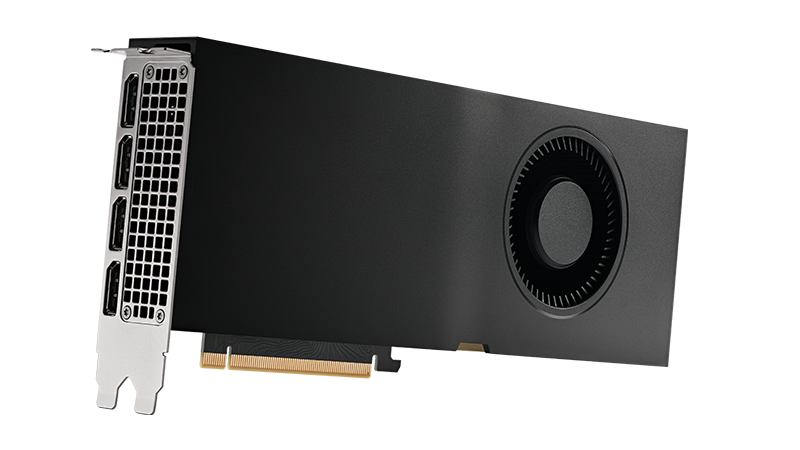Nvidia Releases New RTX A4500 Workstation Graphics Card
A card that will slot in between the A4000 and A5000 GPUs
Nvidia today released a new workstation graphics card called the RTX A4500. According to PNY's product page, this GPU comes with 7168 CUDA cores, 244 Tensor cores, 56 RT cores, and 20GB of GDDR6 with 640GB/s of memory bandwidth. This card is aimed at the workstation market and isn't intended to be a gaming GPU like Nvidia's standard GeForce RTX series GPUs.
The A4500 is designed to slide in between the current A4000 and A5000 GPUs released several months ago. The A4000 offers 6144 CUDA cores and 16GB of GDDR6 memory; meanwhile, the A5000 has a much higher core count of 8192 CUDA cores and 24GB of GDDR6 memory. For more info about these GPUs, check out our coverage here.



More specifications of the A4500 include ECC memory support, a PCI-e Gen 4 x16 interface, and four DisplayPort 1.4a ports. The card features NV-Link support as well for pairing multiple A4500s together for more intensive workloads. The card will operate with a maximum power output of 200W as well. According to PNY's model of the A4500, the card will also offer 23.7 TFLOPS of compute performance, which slots in between the A4000's 19.2 TFLOPS of performance and the A5000's 27.8.
The exterior of the A4500 features a matte black finish along with gold accents on the top and bottom sides of the card. The graphics card is two PCIe slots thick and features a blower-style cooler like many other workstation GPUs. Supplementary power is provided by a single 8-pin connector, allowing the card to reach its maximum power consumption of 200W.
Pricing for the A4500 is unknown since you have to order these GPUs from an OEM. However, according to Amazon prices, we expect it to hover around the $2,000 to $2,500 mark. The A4000 goes for $1,699 and the A5000 for $3,000 if you plan on buying this GPU from a retail source.
Get Tom's Hardware's best news and in-depth reviews, straight to your inbox.

Aaron Klotz is a contributing writer for Tom’s Hardware, covering news related to computer hardware such as CPUs, and graphics cards.